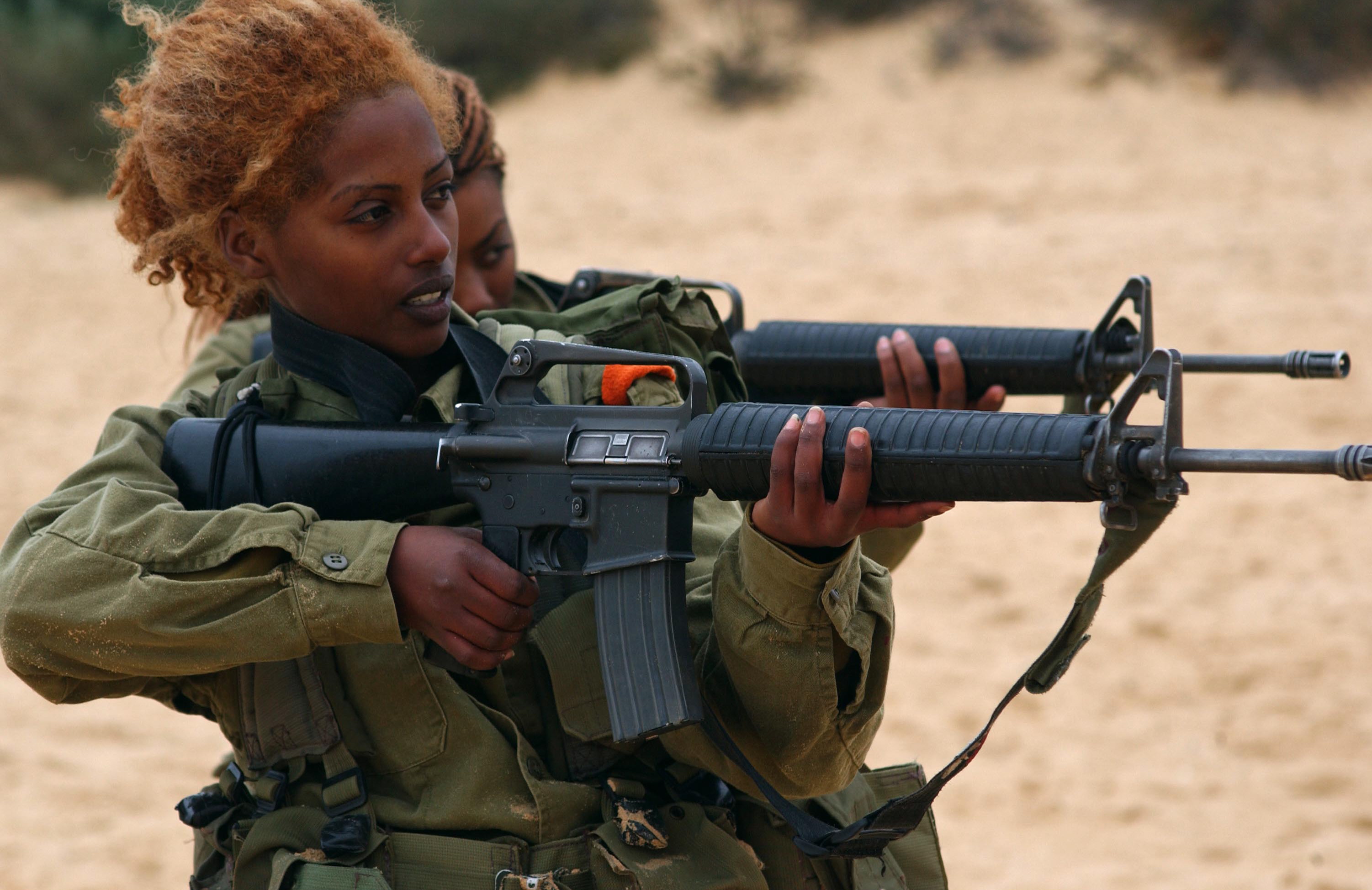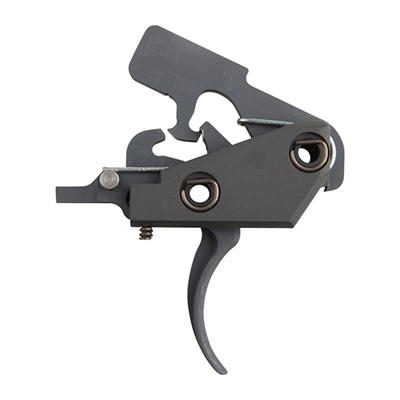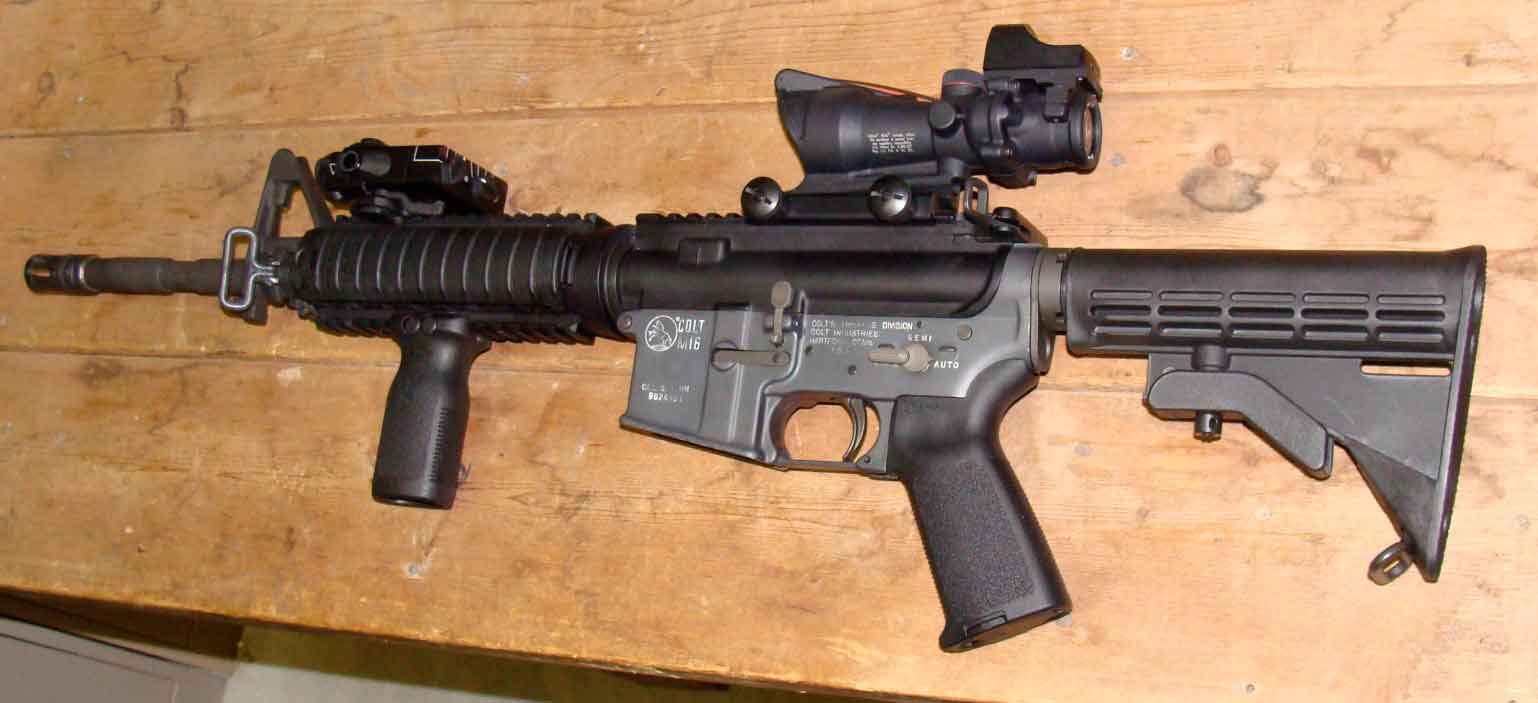Table of Contents
Superman may be faster than a speeding bullet, but all he had to do was show up from Krypton and wear tights. Big deal.
Designing and creating a firearm like the AR-15? That is an accomplishment.
The most important piece of any rifle is the barrel. Although other parts may be just as crucial and essential, the barrel seems to be the most significant, because it cannot be changed easily. To paraphrase Boromir in Lord of the Rings: one does not simply replace an AR-15 barrel.
How Are Barrels Made?
Barrels are made using a couple of techniques. One way is to take a solid bar of cylindrical steel, which goes through a certain treatment and arrives soft. At the company, machines straighten it – to within a thousandth of an inch, no less – and drill a hole in the bar, making it into a tube. Then, the inside of the barrel is polished and honed, the rifling is added, and different treatments are administered.
The other technique is known as cold hammer forging (CHF). CHF was invented in WWII Nazi Germany, because the weapons which the Germans were manufacturing were proving to be too costly, and a different way of forging a barrel had to be made in order for production to continue.
CHF starts with precise raw steel bars called mandrels. This steel comes to the factory pre-hardened, because once the CHF process is complete, it is inadvisable for the barrel to undergo any further treatments. If it does, it may lose its integrity.
The mandrels are cut into the desired lengths, and they will in fact be longer in the end. Holes are drilled in the solid bars, and the size is always bigger than the size of the future bore. The rifling type and rate of twist are also visible on the outside of the mandrel. Essentially, what you end up with is the exact negative of the desired barrel, its caliber, and its rifling.
Then comes to the turn of the hammering machine, which compress the bore with millions and millions of hammer strikes during the process. Nowadays, the entire operation is digitized, and is done by using computer numerical control (CNC) machinery to get the best results. Robotic arms and precise calculations make the manufacturing of barrels that much more accurate and productive.
Obviously, nothing will replace a skilled pair of human hands and eyes. A lot of the process of making a firearm still requires human intellect and ingenuity, but these CNC machines really are a wonder. They clean and lube the bore, turn it several times, straighten it several times, and then screw it into a frame when it is ready. Thankfully, not everything is done by machines.
Firing Your Rifle
Ultimately, the rifle’s primary duty is to cause the bullet to hit the target, and this can only happen if the rifle’s barrel is built well. A good barrel can make or break a rifle. It is the backbone of any firearm. It must be strong, straight, and precise. Its build and its rifling must be impeccable, or the bullet may not hit the mark.
The inner-workings of the firing mechanism are equally fascinating. From the moment you pull the trigger of your rifle, a complex and very rapid series of actions goes into effect. How rapid? We’re talking thousandths of a second here. If the measurements and timing are off by even a fraction, the rifle will not cycle.
On the outside, it seems pretty simple – point and shoot. A bullet goes flying out of the barrel, and a new one is loaded in the chamber. What is actually happening inside, though, is nothing less than a sophisticated and well-timed choreography of powder, fire, gas, and steel.
Eugene Stoner, who invented the AR-15, certainly knew what he was doing. Since Stoner’s time, many engineers have built advanced weapons based on his designs and knowledge of M16 history and development. The future of firearms technology is looking bright, thanks to people like Stoner, his contemporaries, and those who follow in their footsteps.
Barrel Differences
If you research M16 rifle specs, you will see that barrels come in many shapes and sizes. They resemble one another in some ways, and differ in others. They are all generally made of steel, and are forged as a separate piece which is then attached to the rifle with the help of a barrel extension. The barrel extensions themselves are separated. Some come with M4 feed ramps (used to lessen the amount of jams), and others do not.
Barrels differ in rifling type, twist rate, caliber, length, and muzzle. There is also the matter of the type of steel used, how the barrel itself was created, and any hot or cold treatments which may be applied to the barrel.
In other words, there is a lot that goes into making a barrel. Different people have different tastes, and not all barrels are created equally. Just because someone likes consistently using a specific barrel length, it does not make it the only viable option. There are those who automatically assume that the longer the barrel is, the more accurate the rifle will be. This is not necessarily true. It depends on the ammo type, the gas system used (direct impingement or piston), the rifling and twist rate, as well as the distance of the target.
Longer barrels do offer a higher velocity in some cases, and that could make a difference in longer ranges. This heightened velocity occurs due to the bullet spending a longer amount of time within the barrel, traveling in a pressurized state as the gases build up behind it.
Velocity is one thing, accuracy is another. In order for a rifle to be accurate, there has to be consistency. Accuracy cannot be sporadic. It either hits the target, or it doesn’t. In that sense, the longer and shorter AR-15 operate in the same way. In the hands of a seasoned shooter (and when fired at short distances), these rifles will hit the mark regardless of the barrel’s length.
Most M16 barrel lengths are between 14.5 inches (military M4 barrel) and 20 inches (classic civilian AR-15). The most widely-used civilian barrel is probably the 16 inch one, mainly since the 14.5 inch one is not legal in all states. Some civilians purchase a 14.5 inch barrel, but add a 1.5 inch muzzle break, when make it legal in the eyes of the authorities. Conversely, barrels can also be 22 and 24 inches long. Anything over that would probably have to be custom made. If you are going for longer ranges, and will need a higher degree of muzzle velocity, nothing beats a long barrel. It’s true to sniper rifles, and it is true here.
Note: the United States has strict Federal regulations when it comes to short barrels. Possession of a short-barreled rifle (SBR) – or even the pieces required to assemble an SBR – requires a tax stamp. Before you decide on shortening a barrel or switching a stock, make sure you are in compliance with your local laws and regulations.
You can have a bad rifle with a good barrel, but you cannot have a good rifle with a bad barrel. The barrel represents the ultimate goal of the rifle. It plays a big role in the projectile’s speed, direction, velocity, and accuracy. Make sure you do your research, and get the barrel that will fir your needs.
Price is, as always, a factor. Lightweight barrels will often cost more, since more material had to be removed from them at the factory. If the barrel is made with very unique rifling or materials, the price will change.
So, it is a lot more complicated then point and shoot. But that, precisely that, is the brilliance of it. You don’t need to know how it all works in order to use it. You don’t need to spend time learning about the inner-workings of your rifle in order to operate it and clean it. Although, that knowledge could potentially add significance to your shooting experience, as well as your rifle maintenance.




No comments yet.